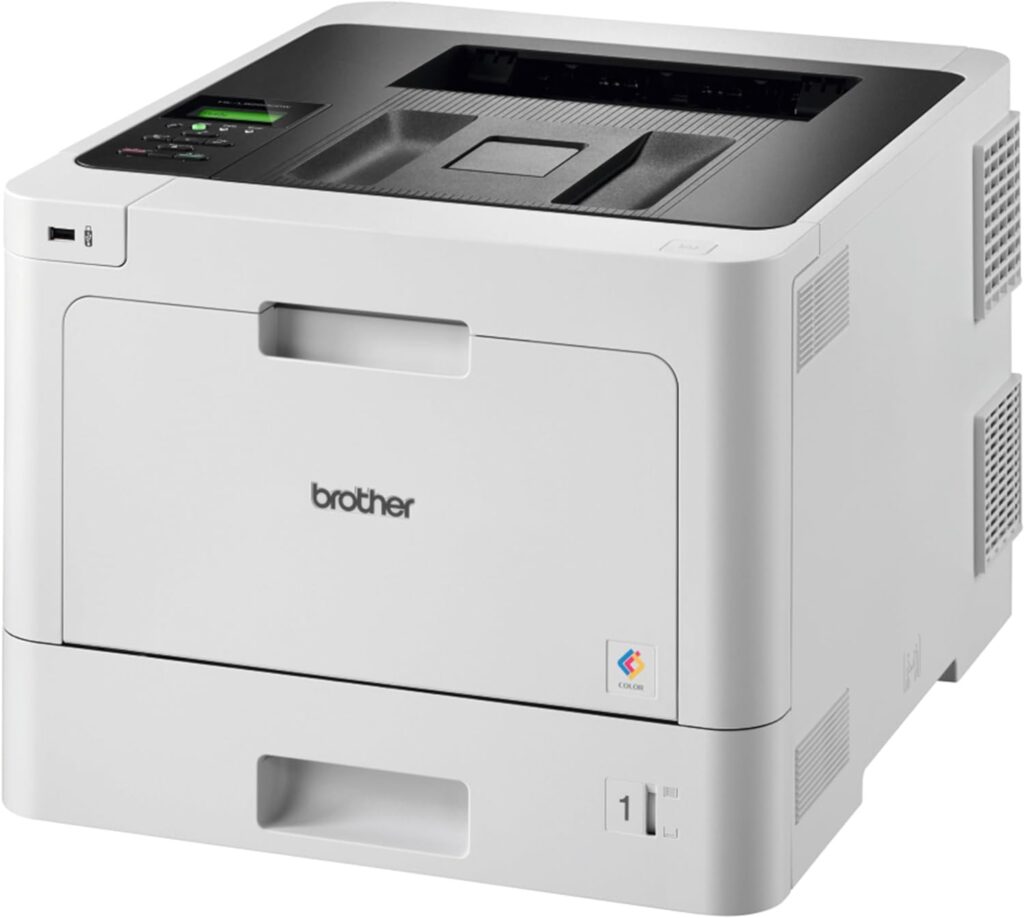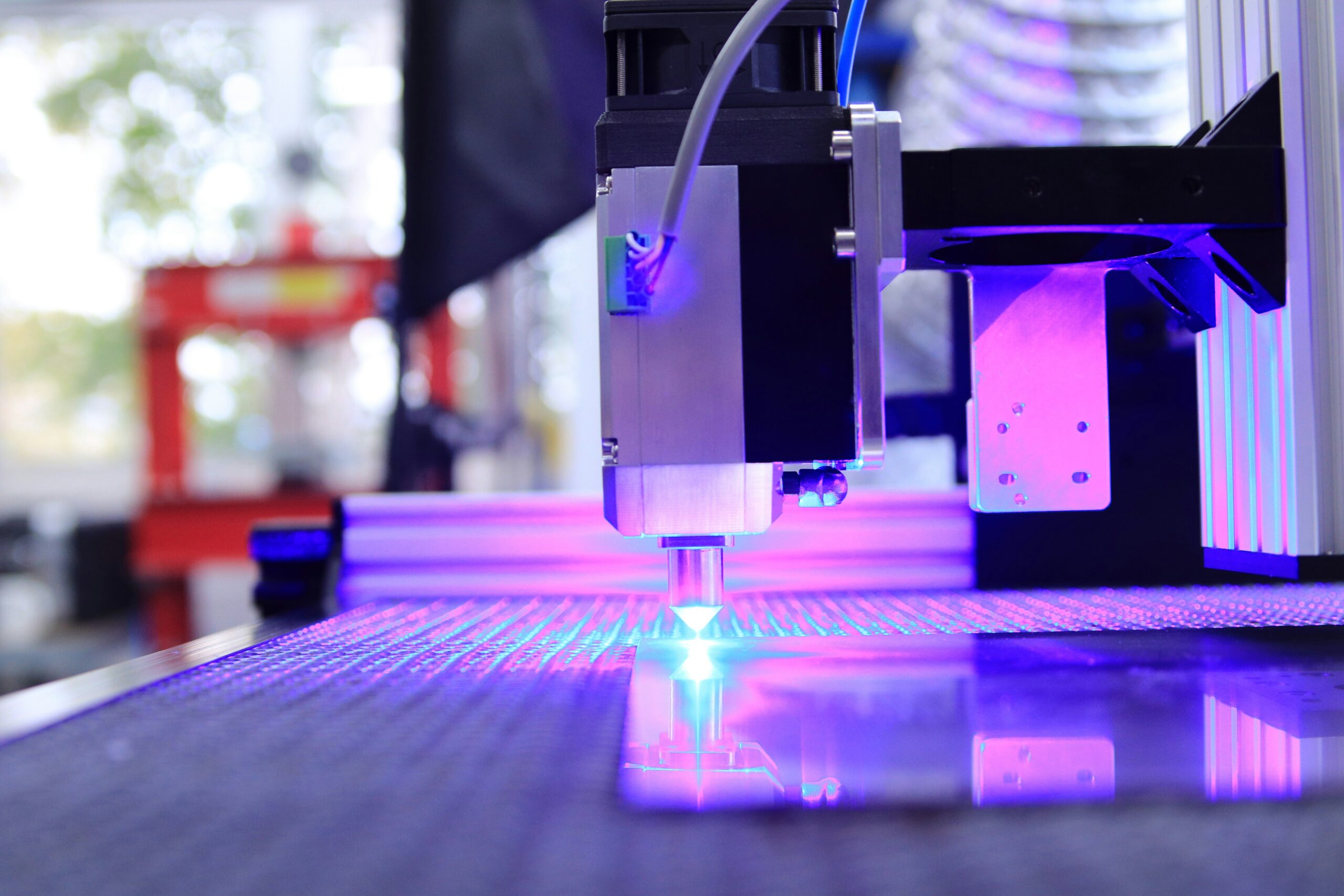A laser printer is a type of printer known for its high-quality text and graphics output. It uses a laser beam to create an image on a drum, which is then transferred to the paper by a toner. Toner is a fine powder that is fused to the paper by heat, creating durable prints. Laser printers are favored for their speed, accuracy and efficiency, making them ideal for both home and office use.
Table of Contents
How does a laser printer work?
Data Transfer: When a print command is given, the printer receives data from the computer.
Charging the drum: A photosensitive drum inside the printer is charged by static electricity.
Laser Action: A laser beam scans the drum, emitting static electricity in specific areas to form a pattern corresponding to the printed image.
Toner application: Toner particles are attracted to the discharge areas of the drum.
Transfer to paper: A toner-coated drum rotates over the paper, which is charged to attract the toner.
Fusing: The paper passes through fuser rollers that heat and press the toner into the paper fibers, creating a permanent print.
Cleaning: The drum is cleaned of residual toner and recharged for the next print job.

Printer Selection Guidelines
When choosing a laser printer, consider the following:
Objective: Identify whether you need a printer for personal use, a small office, or a large workgroup.
Print volume: Estimate your average print volume to choose a printer with an appropriate duty cycle.
Features: Look for features like duplex printing, wireless connectivity, and multi-function capabilities if needed.
Cost: Estimate the total cost of ownership, including the cost of toner cartridges and maintenance.
Print speed and capacity
Personal printers: typically offer speeds of 20-25 pages per minute (ppm), which is suitable for light use.
Workgroup Printers: Designed for medium to heavy use with speeds of 30-55 ppm.
Production printers: handle high-volume printing at speeds of 60 ppm and above, ideal for commercial settings.
Resolution, printer languages, paper handling
Resolution: Laser printers typically provide a resolution of 600 dots per inch (dpi), with higher-end models offering up to 2400 dpi for better detail.
Printer Languages: Common languages include PCL (Printer Control Language) for standard printing tasks and PostScript for complex graphics and high-quality image printing.
Paper handling: Features such as automatic duplexing, multiple paper trays, and support for different paper sizes and types (eg, cardstock, labels) increase versatility.

Warm Up Time and First Paper Out Time (FPOT)
Warm-up time: This is the time it takes for the printer to be ready to print after it is turned on, which can range from a few seconds to several minutes depending on the model.
FPOT: First Paper Out Time refers to the time it takes for the first page to print after a print job is started. This usually lasts from 5 to 30 seconds.
Laser Printers vs. Inkjet: Which is Better?
Cost: Although laser printers have a higher initial cost, they are more cost-effective in the long run due to the lower cost of printing per page.
Print Quality: Laser printers excel at producing sharp, clear text and graphics, making them ideal for business documents. Inkjets are best for high-quality photo printing.
Speed and volume: Laser printers are faster and more efficient for high volume printing, while inkjets are suitable for low to medium volume and color rich prints.
Durability: Prints from laser printers are more durable and less prone to fading than inkjet prints.
History of Laser Printers
Laser printers have evolved significantly since their inception:
1975: IBM introduced the first laser printer designed for use with mainframe computers.
1984: HP revolutionized the market with the HP LaserJet, making laser printing accessible and affordable for small businesses and personal use.
Today: Modern laser printers are compact, multifunctional, and more affordable, offering high-speed, high-quality printing for a variety of applications.
FAQ
What is a color laser printer?
A color laser printer uses laser technology and toner to produce high-quality color prints.
How does a laser printer differ from an inkjet printer?
Laser printers are faster, better for high-volume printing, and produce sharper text. Inkjets are better for photo printing.
Are laser printers more expensive?
Initially, yes, but they have lower long-term costs due to cheaper toner and less frequent replacements.
What should I consider when buying a laser printer?
Consider print speed, resolution, paper handling, cost, and features like duplex printing and wireless connectivity.
How fast are laser printers?
Personal models print 20-25 ppm, workgroup models 30-55 ppm, and production models up to several hundred ppm.
What is resolution in laser printers?
Resolution, measured in dpi (dots per inch), affects print quality. Common resolutions are 600 dpi to 2400 dpi.
How do laser printers handle paper?
They typically support various paper sizes and types, and many offer automatic duplexing for double-sided printing.
Are laser prints durable?
Yes, laser prints are more resistant to smudging and fading compared to inkjet prints.


I’ve been following your blog for quite some time now, and I’m continually impressed by the quality of your content. Your ability to blend information with entertainment is truly commendable.